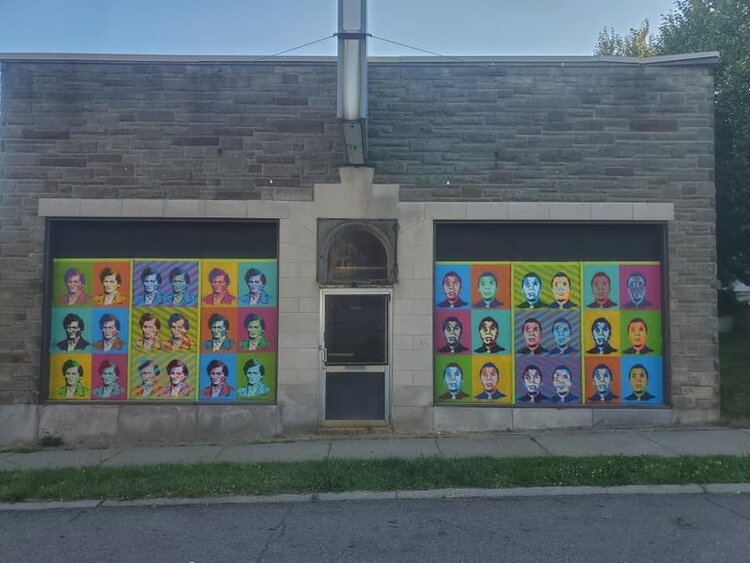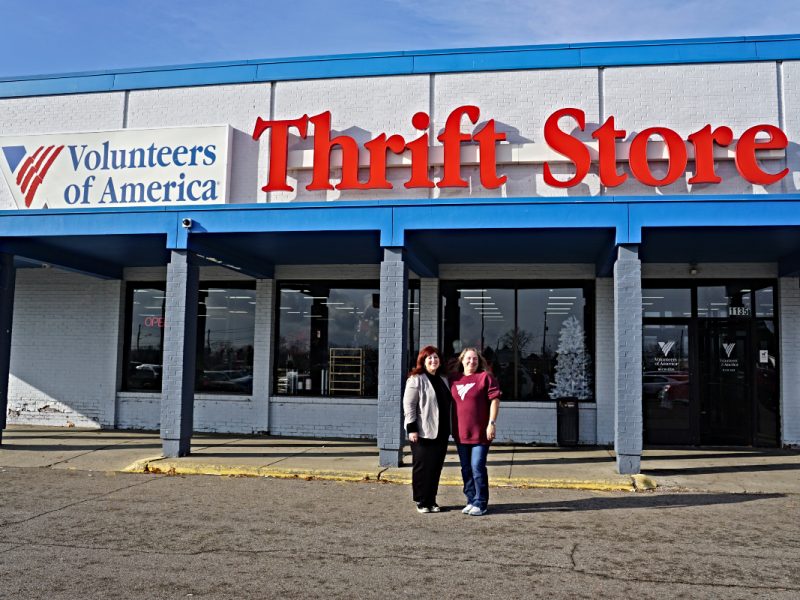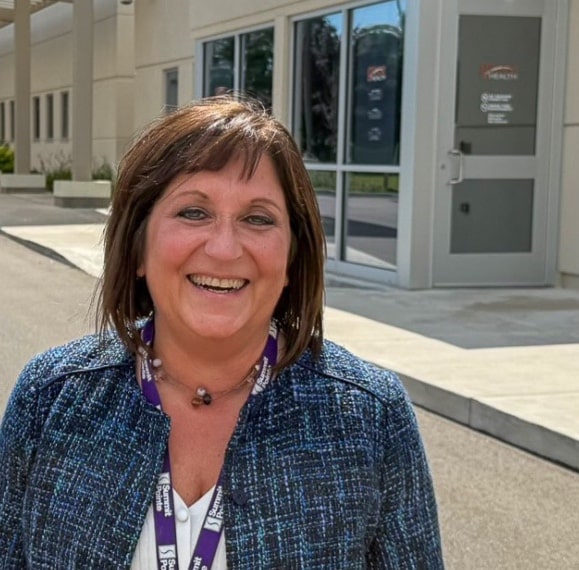New Flint murals reflect the time we are living through
The murals – and art in general – also serve a greater purpose in Flint and around the country during moments like this, when there is heightened awareness around social justice and change. It helps force needed conversation and keeps those discussions prominent and visible.
Like all organizations, the Flint Public Art Project was thrown off schedule due to the COVID-19 outbreak. However, artists working around the city have made up for that lost time with new mural installations around Flint – and more importantly showcasing the important role public art plays in powerfully conveying the moment we are living in.
Since the beginning of summer, four new murals have gone up, all with ties to social justice and the pandemic:
- A Black Lives Matter mural, painted on Martin Luther King Jr. Boulevard near University Avenue, was completed by local artists through a partnership between the Flint Public Art Project, the city of Flint, the Community Foundation of Greater Flint, Little Miss Flint, and the What’s Up Downtown Project.
- A Flint Community Schools “Flint Strong” Jaguar mural, completed by Flint artist Kevin “Scraps” Burdick near Welch Boulevard and DuPont Street, congratulating the class of 2020 students who had their senior year cut short due to the coronavirus outbreak.
- Ten “Pride” hearts painted in locations around Flint, celebrating Pride Month in June, were painted by New Orleans-based Brent Houzenga Studio.
- Houzenga also painted murals of abolitionist Frederick Douglass and writer/activist James Baldwin near Garland Street, between 1st and 2nd avenues.
“We got a late start this summer, but we have more murals coming in August and September,” said Joe Schipani, Flint Public Art Project executive director.
The Black Lives Matter mural was a community project championed by Sandra Branch, vice president of the Flint Public Art Project. She brought together various community groups and artists to design the mural and install it, with support of the city. The artists and organizations involved wanted to install the mural in support of protesters across the country who have been rallying in response to the recent deaths of George Floyd, Breonna Taylor, Rashard Brooks, and more who have died at the hands of police.
“It was a truly great community-led project,” Schipani said.

Houzenga’s murals also support social justice themes. His studio was commissioned by the Flint Public Art Project after applying for an open call earlier this year. Kady Yellow, the Flint Downtown Development Authority’s director of placemaking, was familiar with Houzenga’s work from her time in New Orleans and connected him with Flint Public Art Project. He’d never been to Michigan before traveling here to complete the murals, but was quickly impressed with the Flint community.
“It was amazing. It was a whirlwind weekend,” Houzenga said. “I got there Friday, created the Pride stencil, Saturday painted the Douglass/Baldwin mural, Sunday painted the Pride hearts and some alleyway electrical boxes, flew home Monday. It was very special to be there.”
The murals themselves aren’t the only new feature this year. Last year, Flint Public Art Project brought in artists from around the world to complete dozens of murals in the city. Those murals have since become a source of pride for the community — and an attraction for residents and visitors to the city. Now, thanks to the PixelStix app, visitors can find mural locations, create their own tours, and scan plaques being installed at the sites to find artist information and other details about each piece.
Self-guided mural tours have been in higher demand because being outside in physically distanced groups is one of the few activities that people can participate in while adhering to safety guidelines to curb the spread of COVID-19 this summer. People also have the option of participating in guided tours that feature the murals. Yellow leads a walking tour of murals in the downtown Flint and Carriage Town neighborhoods and Emily Doerr, owner of Flint City Bike Tours, has a popular bike tour of mural locations.
“I saw a lot of people using the mural tours as Father’s Day presents this year,” Doerr said. “The mural tours are really good for bringing people from outside of the city into Flint. We hit 20-25 of the murals in neighborhoods that a lot of people would typically go into in their normal travels, so they let visitors see some of the beauty of Flint.”
The tours also occasionally brought visitors directly in contact with artists as they worked.

“While I was out painting, I saw a lot of people doing the mural tour, which was great and a lot of people stopped to compliment the work,” Houzenga said. “I’ve also seen quite a few people posting and reposting on social media. One person suggested having the pride hearts in Detroit.”
The tours and interest around the murals fit with the Flint Public Art Project’s ultimate goal with the installations — making art accessible and available to all.
“Art has a history of being in safe, white spaces like galleries and museums,” Schipani said. “Those spaces can be intimidating. With public art and public murals, it puts high-quality art by high-end artists that is representative right into the community. The murals, and the information in the app, help ease people into going to galleries and other spaces, it helps break down barriers, helps people look at art, understand it, have conversations about it, and then they can go into other spaces and look at art there the same way they would the murals.”
The murals — and art in general — also serve a greater purpose in Flint and around the country during moments like this, when there is heightened awareness around social justice and social change. It helps force needed conversation and keeps those discussions prominent and visible.
“Imagery, like words, are very important to the dialogue,” Houzenga said. “I think art can be a gateway for people, because the imagery can catch them, and hopefully spark a sense of wonder that might lead them into a different way of thinking. Personally, it has been amazing to have had the opportunity to work on some really meaningful projects since the onset of the pandemic, and to be able to lend my work to some important causes. When the pandemic first came, I was very scared. But I’ve been able to turn that around and be in a place where I’m helping people with my art.”








